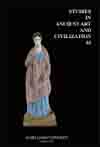Marcin Czermiński and his eyewitness account of the Minoan excavations in Crete at the beginning of the 20th century
Marcin Czermiński and his eyewitness account of the Minoan excavations in Crete at the beginning of the 20th century
Author(s): Michał Bzinkowski, Manuel SerranoSubject(s): Archaeology
Published by: KSIĘGARNIA AKADEMICKA Sp. z o.o.
Keywords: Crete; Marcin Czermiński; Minoan archaeology; Polish travellers
Summary/Abstract: In the late 19th century, almost coinciding with the expulsion of the Ottomans from Crete, the Jesuit priest Marcin Czermiński arrived on the island. Between 1899 and 1904, this traveller from Krakow made three visits to Crete, mainly staying around the central and western parts of the island. He described his impressions in a number of publications. During his second visit (1903), Czermiński focused his attention on the most important archaeological excavations of the time. First, he visited the sites of Phaistos and Ayia Triada in southern Crete and had the opportunity to meet the pioneers of Italian archaeology, Luigi Pernier, Federico Halbherr and Roberto Paribeni. Afterwards, he visited the great palace of Knossos and finally arrived at the Heraklion museum, whose director, Iosif Hatzidakis, shared a great discovery with him.
Journal: Studies in Ancient Art and Civilization
- Issue Year: 2012
- Issue No: 16
- Page Range: 249-267
- Page Count: 19
- Language: English

